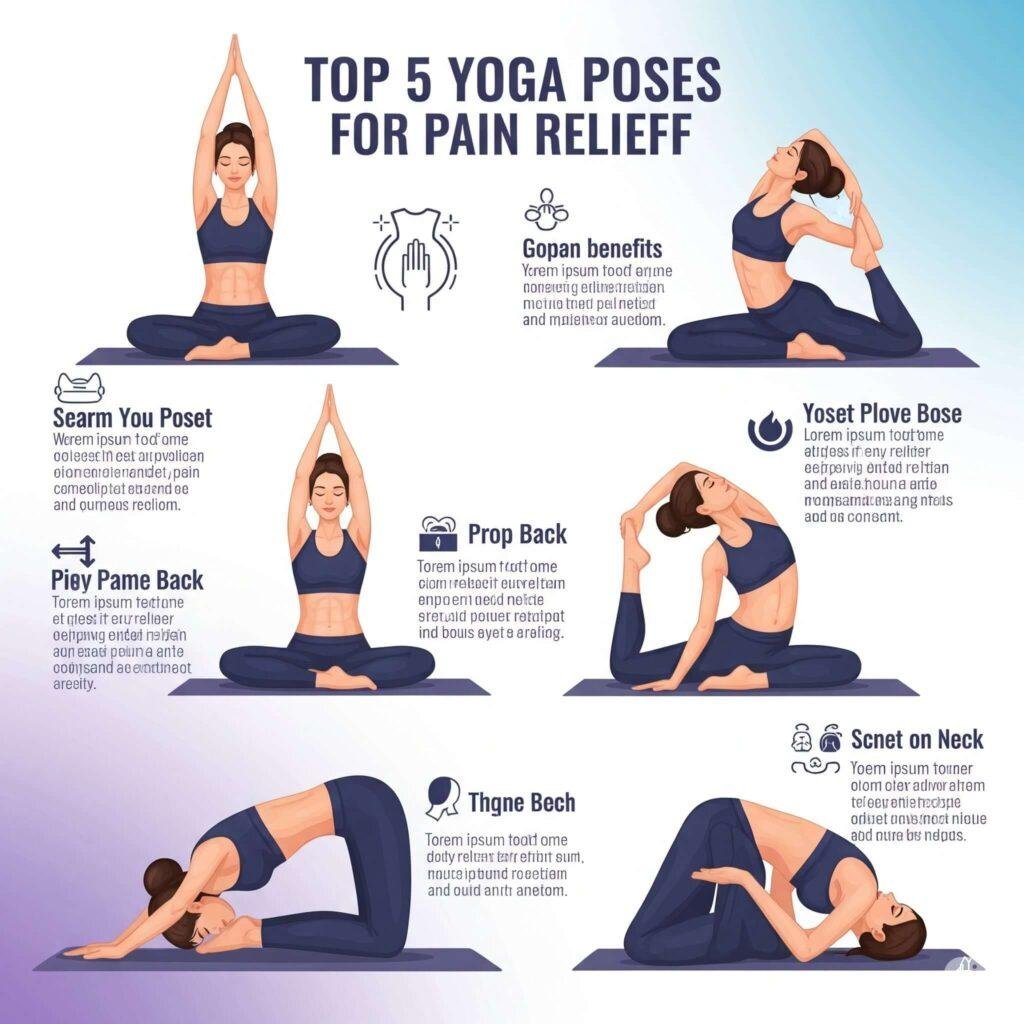Introduction
It’s wearing—arthritis, backache, or muscle spasm, Yoga for chronic pain management is wearing. Painkillers might work temporarily, but they’re not always the solution in the long run. Say hello to yoga as a means of managing chronic pain. It’s not all bends; yoga relieves pain by releasing spastic muscles, enhancing flexibility, and even soothing the mind.
I’ve spoken to individuals who’ve tried everything—physio, medication, even acupuncture—but adding yoga made the biggest difference. So, let’s discuss how it helps, the best poses, and some practical advice to get you started (without exacerbating the problem).
(Note: I am not a doctor, so do always get your own permission before attempting new exercises, particularly if you have active pain conditions.)
Why Yoga Actually Helps with Chronic Pain (H2)
Okay, so why does yoga work when other exercise sometimes exacerbates pain? Here’s why:
It’s powerful but gentle – Unlike high-impact exercise, yoga loosens tension without stressing joints.
Breathing matters – Deep breathing = less tension = less pain. Simple, but effective.
Science validates it – Studies (such as this Harvard one) demonstrate that yoga can reduce pain by as much as 30% over weeks.
One of the women I interviewed, Sarah, had fibromyalgia and reported that yoga was the only thing that ever helped her. She began with 10 minutes a day and gradually increased.

5 Easy Yoga Poses for Chronic Pain (That Won’t Hurt You) (H2)
- Child’s Pose – For Lower Back & Hip Pain (H3)
How to do it: Start on all fours, arch back, lifting front of body and head off ground, then round back, tucking chin to chest and head to the ground.
Why it works: Helps loosen up the spine.
Pro tip: Breathe slowly and deeply through this stretch.
(Image idea: Person in Cat-Cow Stretch on all fours.)
- Cat-Cow Stretch – For Stiff Spines (H3)
How to do it: On hands and knees, alternate arching back (cat) and dipping back (cow).
Why it works: Gets spine moving smoothly again.
Common mistake: Don’t rush—go slowly with your breath.

- Legs-Up-the-Wall – For Swelling & Sciatica (H3)
How to do it: Lie on back, push hips forward toward wall, and place legs straight up against wall.
Why it works: Decreases swelling and nerve pressure.
Bonus: Superb following a long day on your feet!
But… Does Yoga Actually Help with Pain? (What the Research Suggests) (H2)
Others believe yoga’s a fad, but actual studies contradict them:
A study by the National Institutes of Health discovered that yoga reduced fibromyalgia pain by half in the majority of patients.
Research published within the Journal of Pain Research revealed patients with arthritis experienced less stiffness and improved movement after 8 weeks of yoga.
That aside—it’s not magic. Be consistent. Things take a while to show up, but they will.
Mistakes to Avoid When Using Yoga for Pain Relief (H2)
I’ve watched individuals dive into yoga and get sore muscles. Here are ways to avoid pitfalls:
Don’t force it – If you’re experiencing pain in a pose, step away or omit it. Yoga does not hurt like torture.
Skip the ego – No pretzel twisting necessary. Adjust as necessary.
Breathe, for real – Not breathing = constricted. Breathe in/breathe out deeply.

Final Thoughts: Is Yoga Worth Trying for Chronic Pain?
If you’ve tried the meds, massages, and ice packs and still hurt, yoga for chronic pain management could very well change your life. Move slowly, listen to your body, and give it a few weeks.
Got questions? Leave ’em in the comments below—I’ll do my best to help!
Outbound Link: Benefits of Yoga | American Osteopathic Association:





































